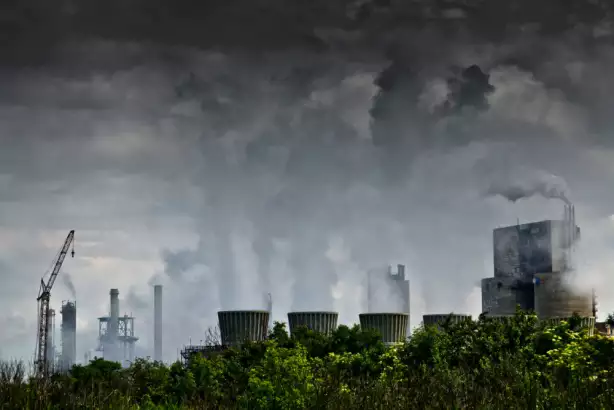RTO Air Pollution Control Project Management
Introducción
Regenerative Thermal Oxidizer (RTO) has been widely used to control air pollution in many industries. The RTO system is designed to destroy air pollutants by using high temperature and air flow. When the air pollutants pass through the ceramic beds in the RTO system, they are oxidized into harmless products such as carbon dioxide and water vapor. RTO air pollution control project management is critical to ensure the effectiveness and efficiency of the system. In this article, we will discuss the different aspects of RTO air pollution control project management in detail.
Design and Construction
- RTO system is designed based on the type and amount of pollutants to be treated, and the required destruction efficiency.
- The design must comply with the local and federal regulations, and the safety standards.
- The construction of the RTO system should be done by experienced and certified professionals.
- The installation should be done carefully to ensure the proper alignment and sealing of the system.
- The system should be tested and commissioned before it is put into operation.
Operation and Maintenance
- The RTO system should be operated by trained and skilled personnel.
- The system should be monitored regularly to ensure the proper functioning of the system.
- The maintenance schedule should be followed strictly to prevent any breakdowns or malfunctions.
- The maintenance tasks may include cleaning the ceramic beds, inspecting the valves, and replacing the filters.
- The spare parts should be kept in stock to minimize the downtime in case of any emergency.

Performance Monitoring and Improvement
- The RTO system performance should be monitored regularly to ensure the required destruction efficiency is achieved.
- The performance monitoring may include measuring the inlet and outlet concentrations of pollutants, and the temperature and flow rates of the air streams.
- The data collected should be analyzed to identify any issues or areas for improvement.
- The improvement measures may include modifying the operating parameters, upgrading the components, or optimizing the system design.
- The performance monitoring and improvement should be done continuously to ensure the RTO system is operating efficiently and effectively.

Conclusión
RTO air pollution control project management is critical to ensure the proper design, construction, operation, maintenance, performance monitoring, and improvement of the RTO system. The RTO system is an effective and efficient way to control air pollution in many industries, but it requires proper management to achieve the desired results. By following the best practices and guidelines for RTO air pollution control project management, we can ensure the safety, compliance, and sustainability of our environment and industries.
Presentación de la empresa
We are a high-tech enterprise specializing in the comprehensive treatment of volatile organic compounds (VOCs) waste gas and carbon reduction and energy-saving technology. Our core technologies include thermal, combustion, sealing, and self-control, with the ability to simulate temperature fields, air flow fields, and model calculations. We also have the ability to test the properties of ceramic heat storage materials, molecular sieve adsorption materials selection, and VOCs high-temperature incineration and oxidation characteristics.
Our team has an RTO technology R&D center and waste gas carbon reduction engineering technology center in Xi’an, and a production base of 30,000 square meters in Yangling. We are a leading manufacturer of RTO equipment and molecular sieve rotary equipment production and sales globally. Our core technology team is from the Aerospace Liquid Rocket Engine Research Institute (Aerospace Six Institute). We have more than 360 employees, including more than 60 R&D technical backbones, including three senior engineers, six senior engineers, and 47 thermodynamics PhDs.
Our core products include rotary valve-type heat storage oxidation incinerator (RTO) and molecular sieve adsorption and concentration rotary, combined with our own environmental protection and thermal energy system engineering technical expertise, we can provide customers with various industrial waste gas comprehensive treatment and thermal energy utilization and carbon reduction solutions.
Certifications, Patents, and Honors
We have obtained certifications and qualifications such as knowledge management system certification, quality management system certification, environmental management system certification, construction industry enterprise qualification, high-tech enterprise, rotary heat storage oxidation furnace rotary valve patent, rotary heat storage incinerator equipment patent, and disc molecular sieve rotary patent, etc.

How to Choose the Right RTO Equipment
- Determine the characteristics of the waste gas.
- Understand the local regulations and emission standards.
- Evaluar la eficiencia energética.
- Considere la operación y el mantenimiento.
- Análisis de presupuesto y costos.
- Choose the appropriate type of RTO.
- Considere los factores ambientales y de seguridad.
- Performance testing and validation.
It is important to carefully consider each of these factors when selecting the appropriate RTO equipment for your needs.

RTO Air Pollution Control Service Process
- Initial consultation, on-site inspection, and needs analysis.
- Plan design, simulation and review of the plan.
- Customized production, quality control, and factory testing.
- On-site installation, commissioning, operation, and training.
- Regular maintenance, technical support, and spare parts supply.
Our professional team can provide tailored RTO solutions for our customers as a one-stop-shop for RTO air pollution control.
Autor: Miya
